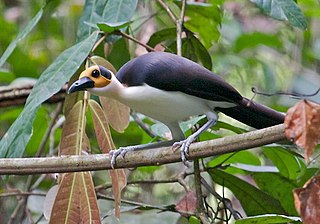
The picathartes, rockfowl, or bald crows are a small genus of two passerine bird species forming the family Picathartidae found in the rain-forests of tropical west and central Africa. They have unfeathered heads, and feed on insects and invertebrates picked from damp rocky areas. Both species are totally non-migratory, being dependent on a specialised rocky jungle habitat. Both species are listed as vulnerable to extinction on the IUCN Red List.
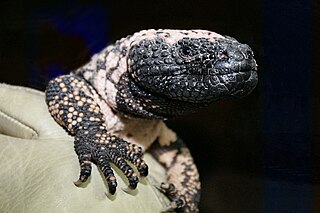
Heloderma is a genus of toxicoferid lizards that contains five species, all of which are venomous. It is the only extant genus of the family Helodermatidae.

Hylidae is a wide-ranging family of frogs commonly referred to as "tree frogs and their allies". However, the hylids include a diversity of frog species, many of which do not live in trees, but are terrestrial or semiaquatic.

Rhinichthys, known as the riffle daces, is a genus of freshwater fish in the carp family (Cyprinidae) of the order Cypriniformes. The type species is Rhinichthys atratulus, the blacknose dace. Rhinichthys species range throughout North America.
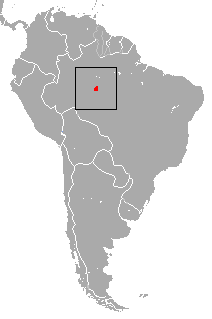
The Roosmalens' dwarf marmoset, also known as the black-crowned dwarf marmoset, is a small New World monkey native to the Amazon Rainforest, on the east bank of the lower Madeira River, and the west bank of the Aripuanã River, in Brazil. It has the smallest distribution of any primate in Amazonia. This marmoset has several unique attributes, which has resulted in it sometimes being placed in the monotypic genus Callibella. However, genetic analysis has subsequently resulted in its being classified within the genus Mico.

The glass frogs are frogs of the amphibian family Centrolenidae. While the general background coloration of most glass frogs is primarily lime green, the abdominal skin of some members of this family is transparent and translucent. The internal viscera, including the heart, liver, and gastrointestinal tract, are visible through the skin, hence the common name is given as glass frog. Glass frogs are arboreal, meaning they mainly live in trees, and only come out for mating season.
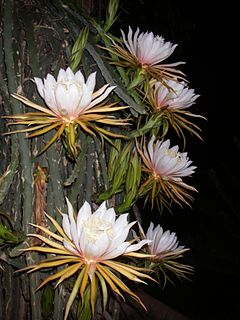
Hylocereus is a former genus of epiphytic cacti, often referred to as night-blooming cactus. Several species previously placed in the genus have large edible fruits, which are known as pitayas, pitahayas or dragonfruits. In 2017, a molecular phylogenetic study confirmed an earlier finding that the genus Hylocereus was nested within Selenicereus, so all the species of Hylocereus were transferred to Selenicereus.

Alsodes is a genus of alsodid frogs found in Chile and Argentina. It is the most species-rich frog genus in Patagonia. Common name spiny-chest frogs has been coined for them.

Eupsophus is a genus of frogs in the family Alsodidae. They are sometimes known as ground frogs. The genus is endemic to Patagonia. Eupsophus is the second most species-rich frog genera of Patagonia. These frogs are restricted to forested areas at southern latitudes.

Cophylinae is a subfamily of microhylid frogs endemic to Madagascar. It has over 100 species in eight genera. Members of this subfamily range from minute to fairly large, and they are highly ecologically diverse. DNA barcode research has revealed a significant taxonomic gap in this subfamily, and an estimated 70+ candidate species were identified. Many of these have subsequently been described, as well as numerous new discoveries.
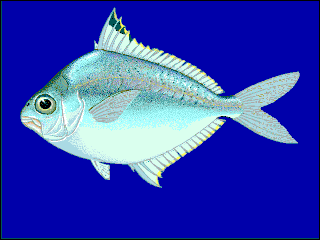
Leiognathidae, the ponyfishes, slipmouths or slimys / slimies, are a small family of fishes in the order Perciformes. They inhabit marine and brackish waters in the Indian and West Pacific Oceans. They can be used in the preparation of bagoong.

Agalychnis lemur, also known as the lemur leaf frog or lemur frog, is a species of frog in the family Phyllomedusidae, also treated as the subfamily Phyllomedusinae in the Hylidae. It is found in Costa Rica, Panama, and adjacent northwestern Colombia. It is classed as Critically Endangered and threatened by the fungal disease chytridiomycosis.
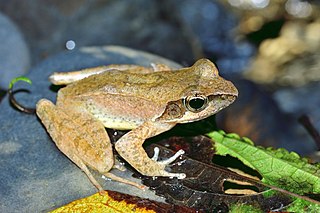
Rana sauteri is a species of true frog endemic to Taiwan. It inhabits low-altitude hill forests and the associated streams. It is an endangered species threatened by habitat loss due to agriculture and infrastructure development. Common names recorded for Rana sauteri include Kanshirei Village frog, Taiwan groove-toed frog, Sauter's brown frog, and Taiwan pseudotorrent frog.
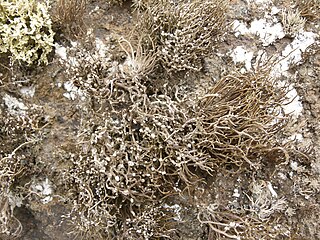
Roccella tinctoria is a lichenised species of fungus in the genus Roccella, homotypic synonym of Lecanora tinctoria (DC.) Czerwiak., 1849. It was first described by Augustin Pyramus de Candolle in 1805. It has the following varieties:
Scalenodon is an extinct genus of traversodontid cynodonts from the Middle Triassic of Africa and possibly Russia. The type species S. angustifrons was named in 1946 and several other species were named in the following years. Most of the species from Africa are now thought to belong to different genera than Scalenodon.

The Alsodidae are a small family of frogs from South America between Patagonia and southern Brazil. It contains 30 species in three genera. This family, along with several other families, used to be included in the family Leptodactylidae. It was then a subfamily in the family Cycloramphidae, before being recognized as a family first in 2011.

Maaminga is a genus of parasitic wasps containing two species and constituting the family Maamingidae. So far only known from New Zealand, the two named species are Maaminga marrisi and M. rangi. The genus name derives from the Māori word "māminga", simply translated as "trickster" as the species evaded discovery for so long.

Colubroidea is a superfamily of snakes in the clade Colubroides that include Colubridae and a few other related families. Historically, Colubroidea also included other caenophidian snakes such as cobras and vipers, as these snakes form a clade. However these groups are now divided into several distinct, but related, families. Zaher et al. (2009) proposed to redefine Colubroidea for colubrids and related families, while designating Colubroides as the group containing vipers and cobras as well as colubroids.

Dipsadinae is a large subfamily of colubroid snakes, sometimes referred to as a family (Dipsadidae). They are found in most of the Americas, including the West Indies, and are most diverse in South America. There are more than 700 species.
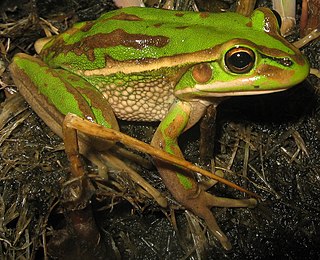
Ranoidea is a genus of frogs in the subfamily Pelodryadinae. They are found in Australia, New Guinea, and two nearby groups of islands: the Maluku Islands, and the Louisiade Archipelago. The circumscription of this taxon is still controversial.


















